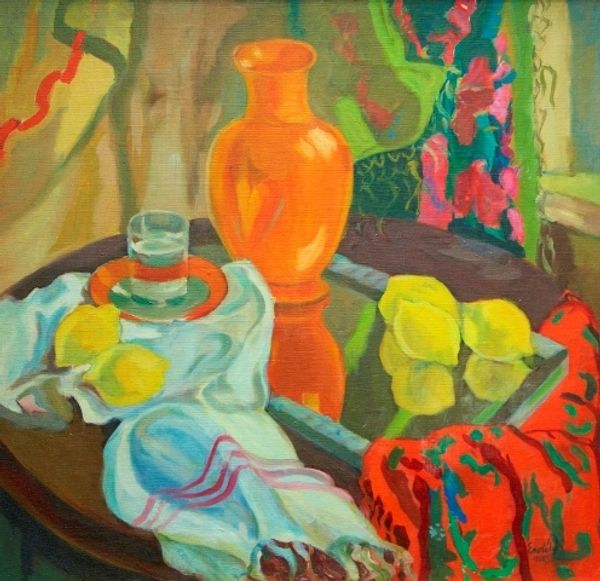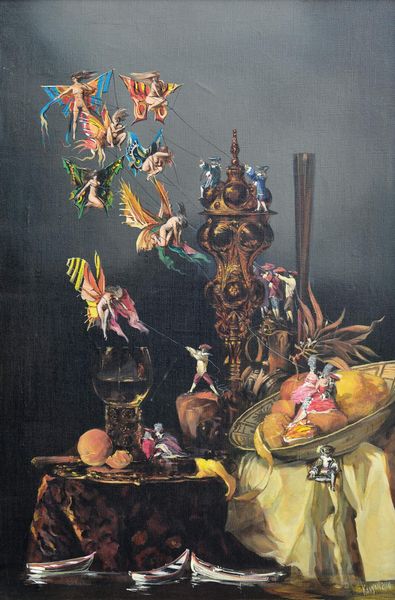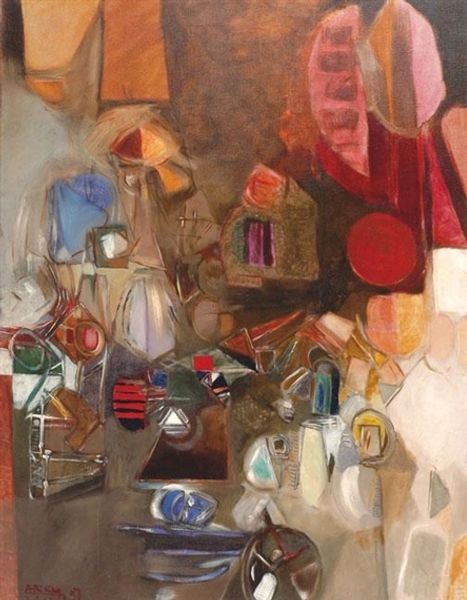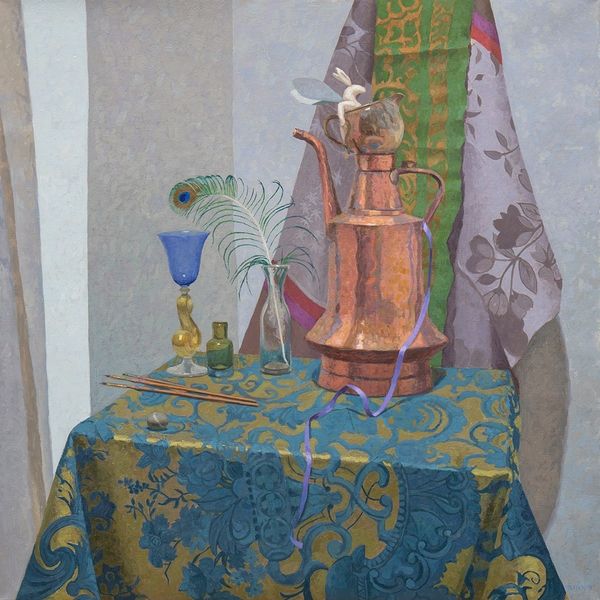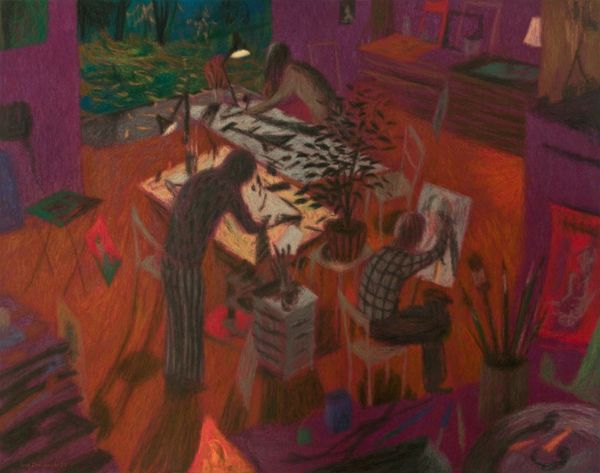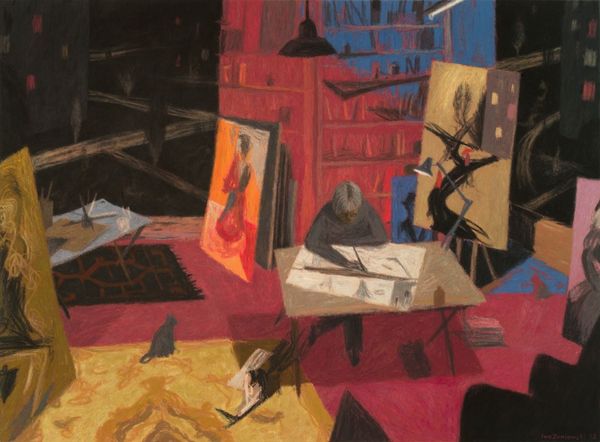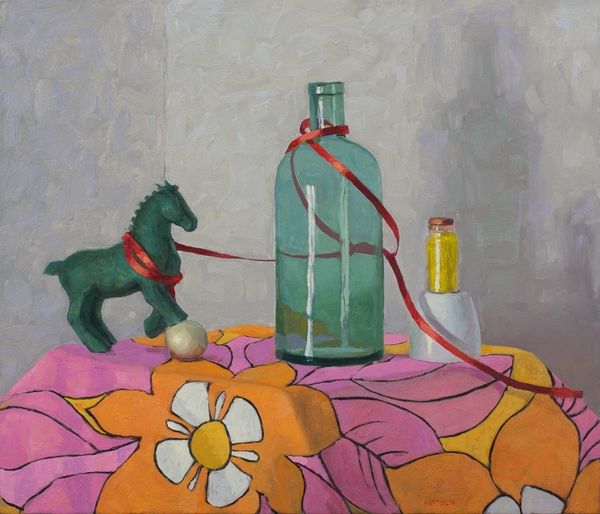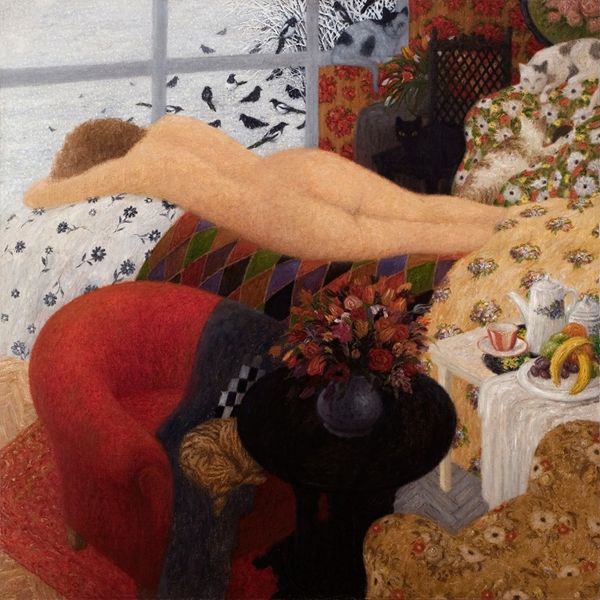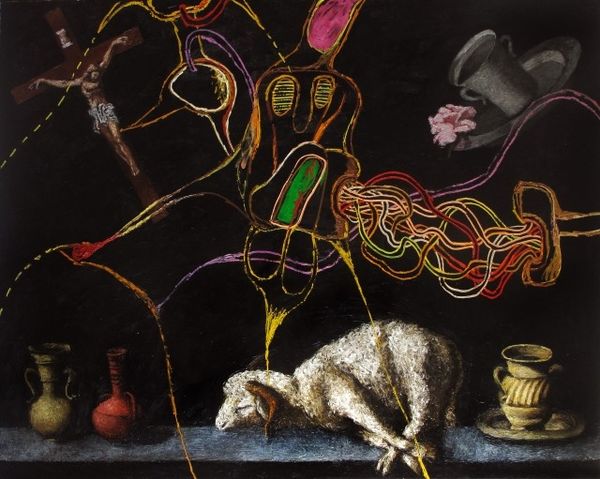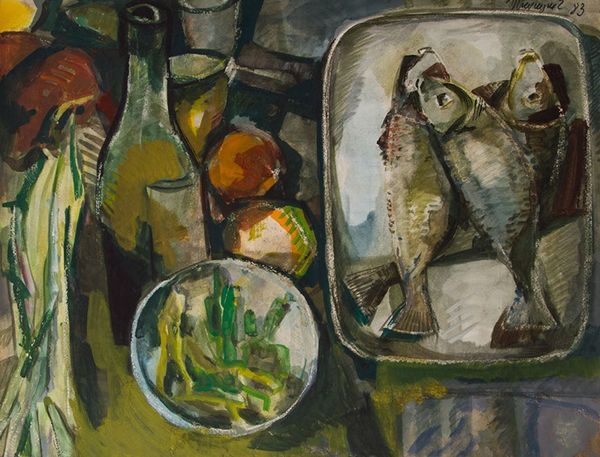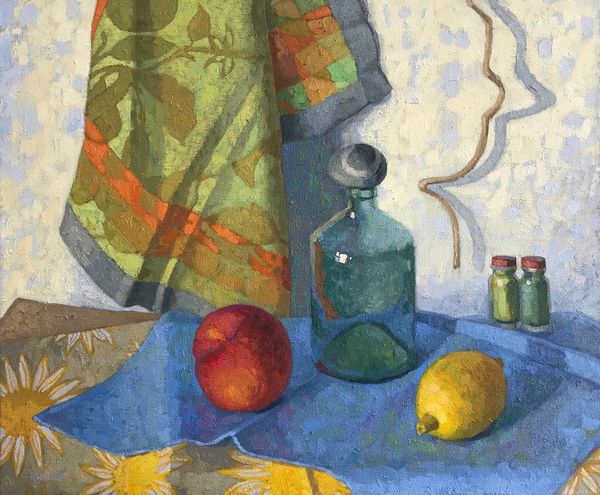
painting, oil-paint
#
water colours
#
painting
#
oil-paint
#
intimism
#
realism
Copyright: Modern Artists: Artvee
Curator: Welcome. We're looking at Melissa Hefferlin's oil-paint and watercolor painting, “Cosimo’s World.” This piece uses realism to draw attention to themes around intimacy. Editor: Right away, it feels so wonderfully… domestic. I keep picturing sunlight streaming into a slightly cluttered, loved-in space. And all that red—it’s warm, maybe a little intense. Curator: I think that’s a great entry point. Notice how the personal is placed on display. The artist uses an art of ordinary life to depict objects with significance that are socially constructed as carrying strong emotion. We see a portrait of a child, some pears, an ornamental deer... it's a layered image of both art and artifact. Editor: Absolutely. It’s like a family archive presented as still life. And the child’s portrait, perched above a clear bottle, seems almost saintly, as though being elevated to some higher ideal or existence. I get a sense of preciousness… and loss, maybe? Curator: I understand that interpretation, particularly within the history of domestic paintings from a feminist point of view. But look closer. Hefferlin isn’t romanticizing; she's observing. We see an intentional collection of objects. It might reflect her intersectional identity and intimate history in art tradition, too. Editor: True. There’s a coolness to it as well. It’s definitely a considered arrangement rather than a spontaneous glimpse into a family room. Almost like memory being reconstructed, deliberately posed. I wonder what those butterflies on the cloth symbolize for the artist. And is it me or does the red become oppressive, eventually? Curator: The butterflies can symbolize a range of emotions in art, from transformation to vulnerability. The objects we fill our homes with carry significant cultural and personal meaning that must be addressed, too. And that red: well, color is rarely accidental. Consider what happens when we shift focus, and place all these objects of a family life, and our reactions, within art and cultural history. Editor: It’s definitely unsettling once you dig into it a little more! It reminds you that behind even the most familiar images of love, a whole web of identity and societal structures are always in play. I find that exciting, really. Curator: It is powerful and transformative! It takes ordinary life and forces the audience to be critical of themes around tradition, representation and emotion, to bring these ideas into dialogue with contemporary culture and art practices. Editor: What a rewarding and reflective moment this has been! Curator: I agree. Thank you for joining us.
Comments
No comments
Be the first to comment and join the conversation on the ultimate creative platform.
